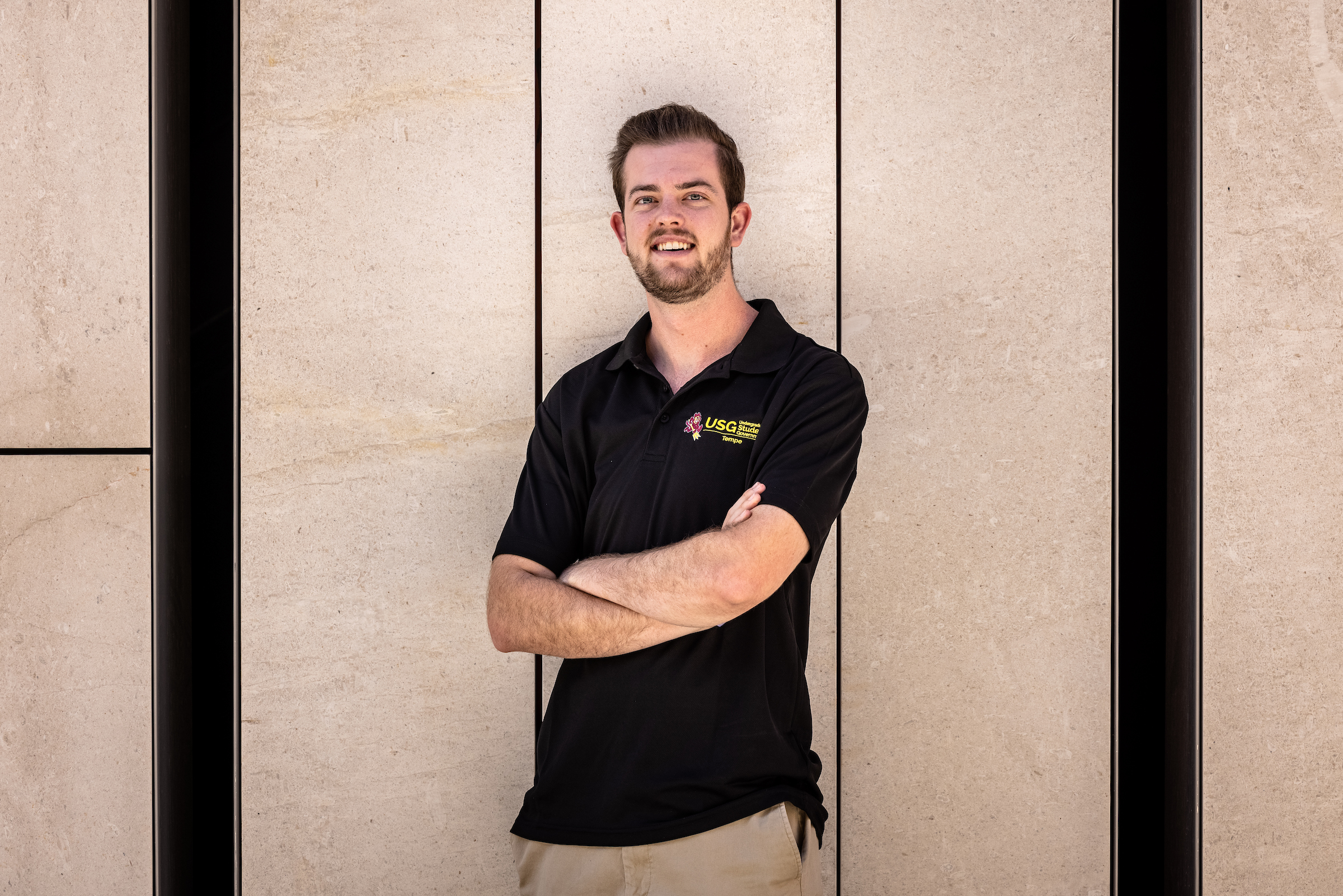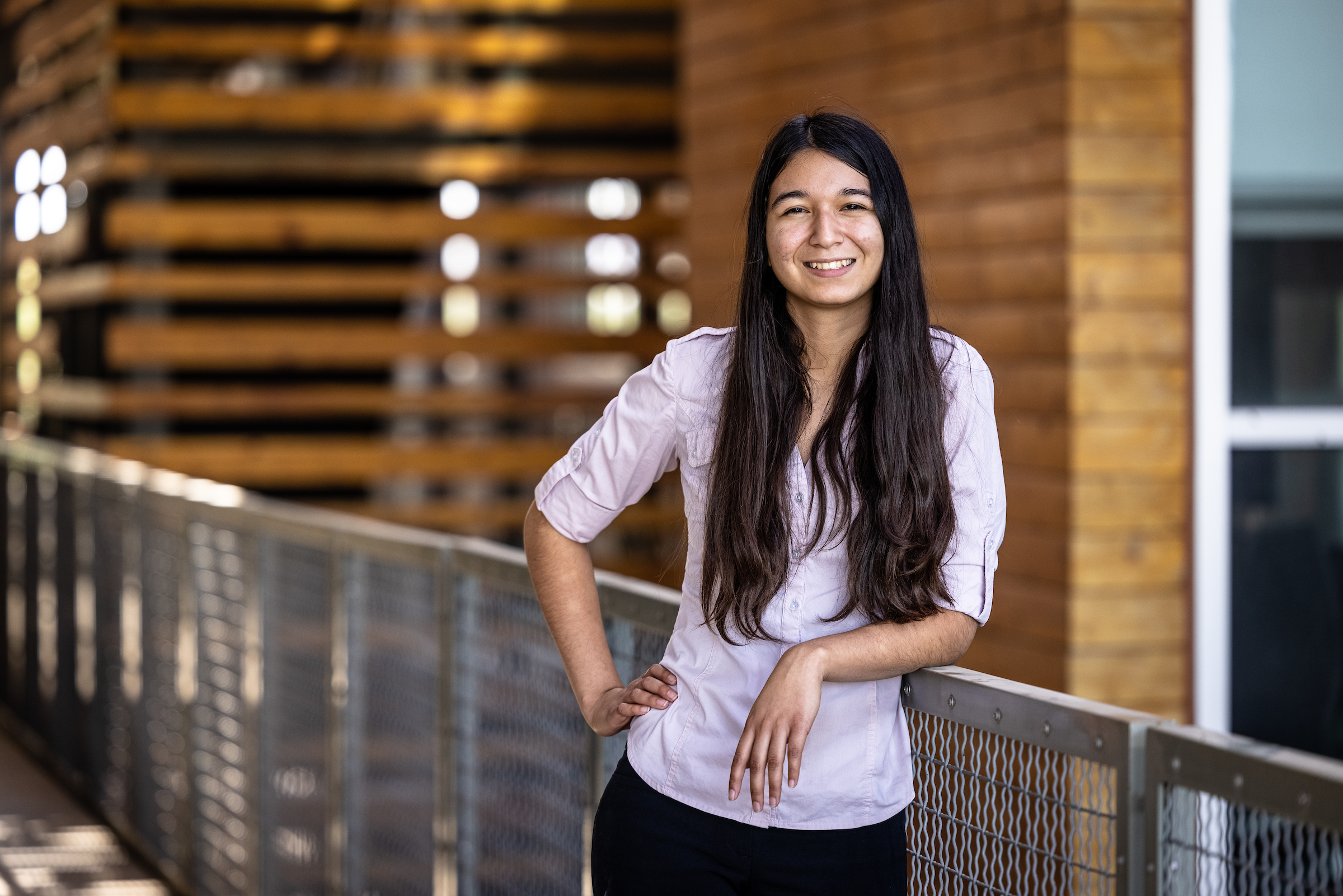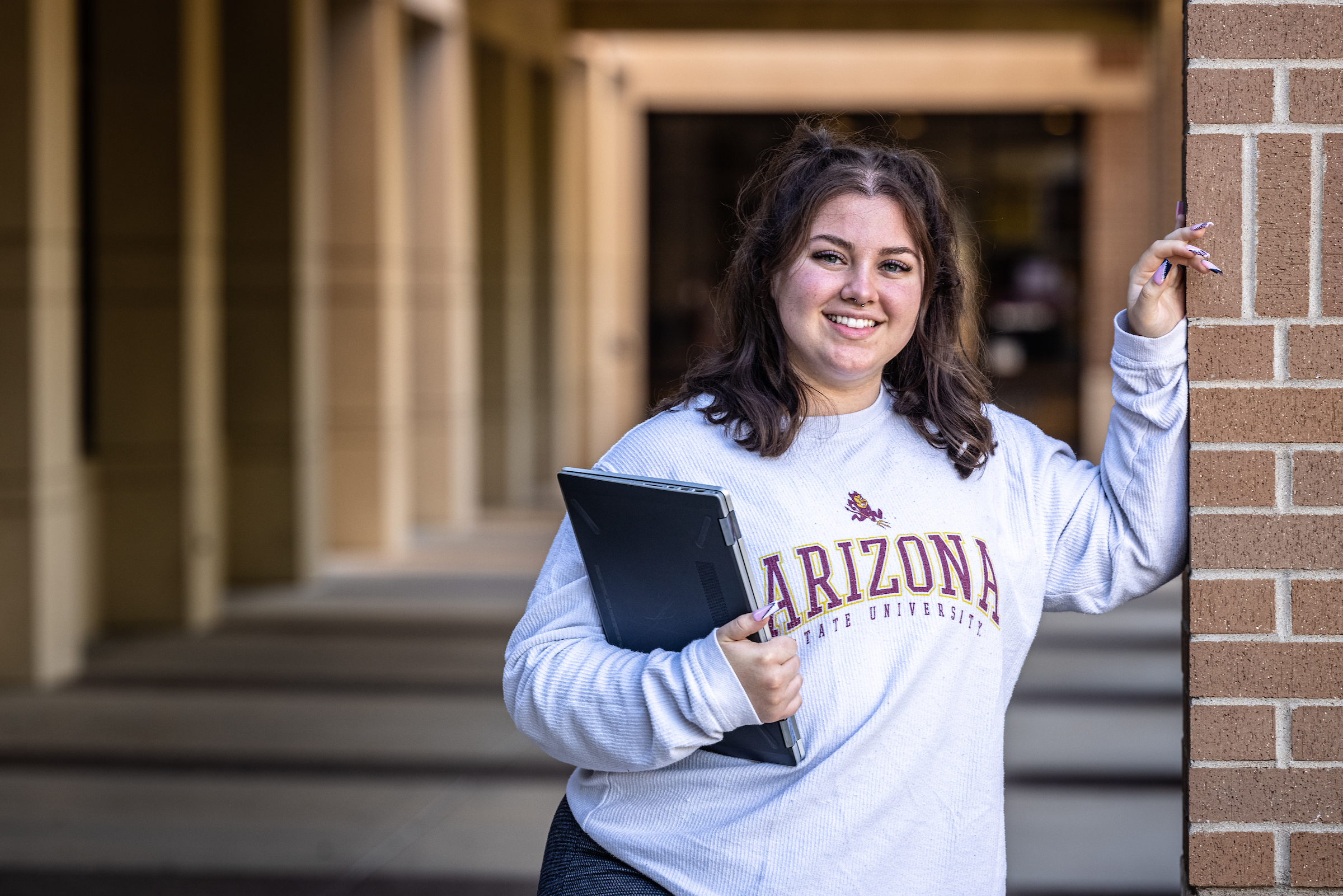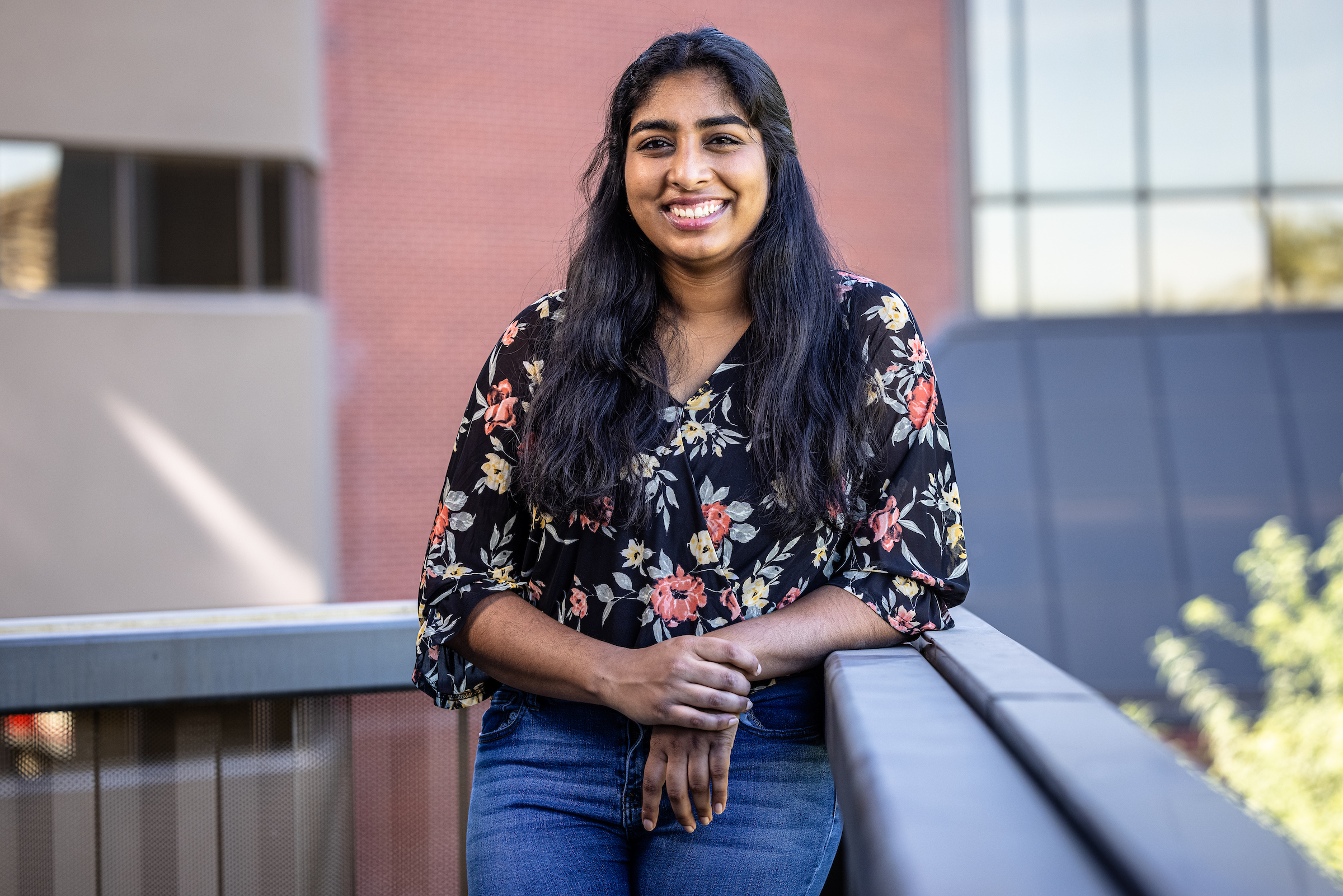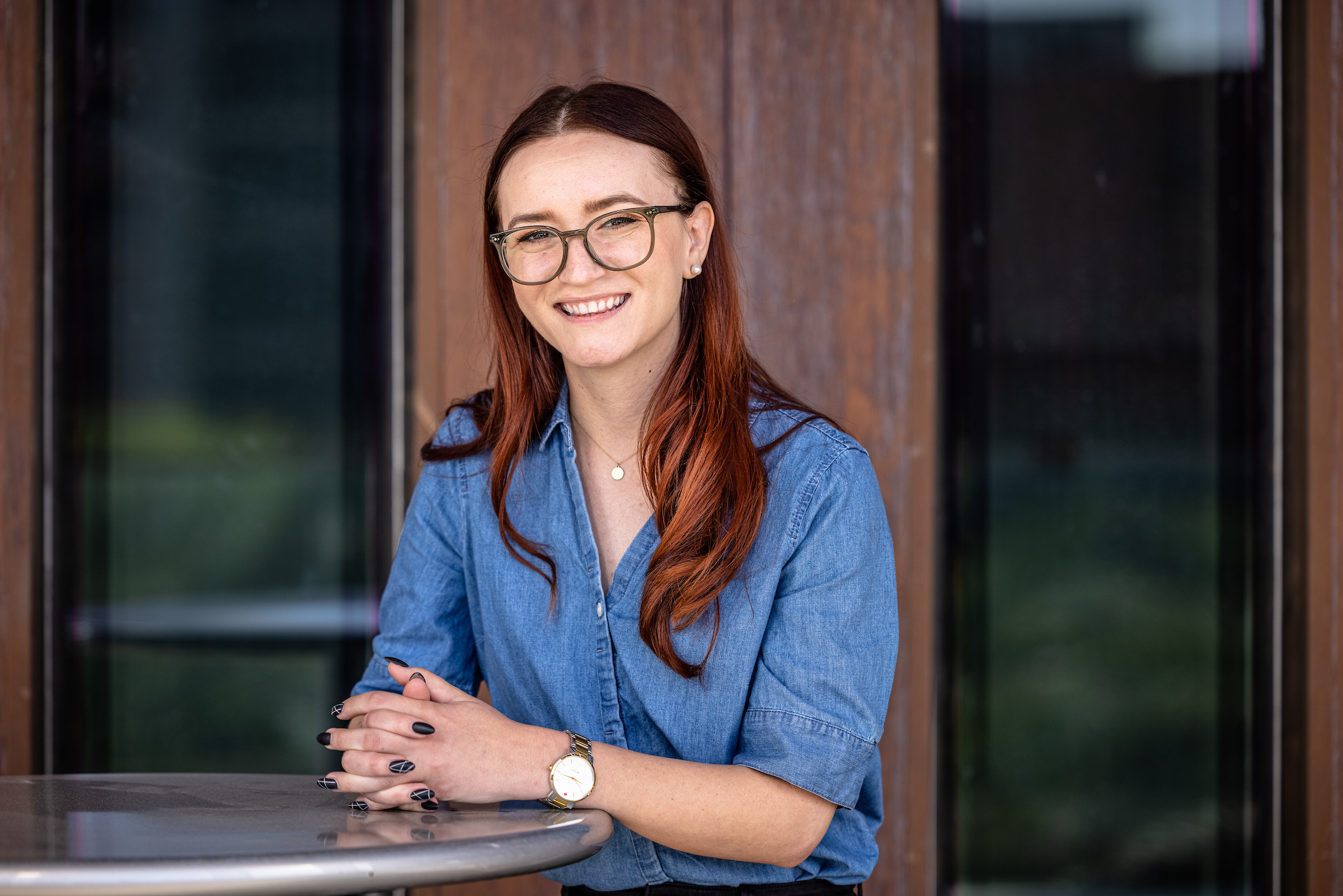From health and wellness to increased transparency, Arizona State University’s student leaders are working on a wide array of priorities this year that they hope will widen access and improve the college-going experience for their peers.
Among some important issues they’re addressing:
Where do your fees go? Starting next year, students will have immediate access to more information when they pay their fees online.
How can you find food if you’re hungry? The student leaders are looking into developing an app that will connect students to local resources for basic needs.
Can you afford grad school? Several goals focus on improving access to graduate school, including setting up scholarships and lobbying for expansion of Pell Grants.
The priority list is set by the Council of Presidents (CoP), which is made up of the student body presidents from the Tempe, Downtown Phoenix, Polytechnic and West campuses, plus the president of the Graduate and Professional Student Association.
Shortly after they were elected last spring, the officers began meeting to set the priority list, which they brainstormed and then streamlined over the summer. The final list was released in September.
The council set the priorities based on student feedback, including what they heard while campaigning, plus consultation with administrators and work done by previous student administrations, according to John Hopkins, student body president for the Tempe campus.
“The CoP believes that we can accomplish a broad range of things, and we’ve designed the list where our passions lie,” he said.
The list is divided into five “pillars,” with several specific goals. Each president is the point person for one of the pillars.
John Hopkins, student body president for the Tempe campus, said that the priorities require a lot of collaboration across many units at ASU. Photo by Charlie Leight/ASU News
Transparency
Hopkins is the contact person for this pillar and said that one of the main goals will go into effect next year, when students will see an arrow tab where they pay their student fees online.
“Next year, when they’re paying their student fees, there will be an information arrow next to the fee, describing it and linking to more information,” he said.
“Now they’ll see ‘This is why I’m paying this fee’ and what it’s going toward.”
Like all of the goals, working on the updated website required collaboration with several ASU units, including the University Technology Office, Student Services and the Dean of Students.
“It’s not easy getting these things accomplished because there are so many moving parts and so many people involved in each priority,” said Hopkins, who is a finance major. He also is pursuing a master’s degree at the Thunderbird School of Global Management at ASU.
“The administration tries to connect us with the right people to get the priorities done. They will give context to situations to give us a better understanding of why things are done a certain way.”
Another goal in the transparency pillar is more information for international students. The council wants to partner with the International Students and Scholars Center to provide updates to international students through their My ASU accounts, such as visa status and testing requirements.
“That would be a long-term goal and I’m working to familiarize myself on that, so that won’t happen overnight,” Hopkins said.
Cecilia Alcantar-Chavez, student body president for the Polytechnic campus, said that while basic needs such as food or housing insecurity are urgent, creating sustainable solutions takes time. Photo by Charlie Leight/ASU News
Basic needs
This pillar addresses concerns over food insecurity and housing. Among the goals are:
- Partnering with the ASU Foundation to create a scholarship for students with unmet basic needs and highlighting the Basic Needs Fund on Sun Devil Giving Day.
- Working with Aramark to provide meal swipes to students in need.
- Supporting the creation of the basic-needs app and integrating it into the ASU app to connect students with local resources such as food assistance.
RELATED: Services for students in need, from immediate meals to emergency financial aid
The contact person for basic needs is Cecilia Alcantar-Chavez, president of the student body at the Polytechnic campus.
“I took a lot of time over the summer to think about a plan on basic needs,” she said. “It was always in my head — how do I let students know what’s here for them at the university?
“One big thing is access to information. We’re working on the groundwork to develop a basic-needs app to let students know what’s here for them.”
Alcantar-Chavez is working with the University Senate on a proposal to have professors add a paragraph to their syllabuses about how students can find basic-needs resources through the Dean of Students Office.
“Another thing is food and housing posters that will raise awareness,” she said. “These would be like, ‘Am I skipping meals?’ ‘Am I couch surfing?’
“If you’re dealing with these things, you should reach out to the Dean of Students and they can help you.”
Issues like food or housing insecurity are urgent, and she said that it can be frustrating when developing solutions takes time.
“It has to be approved to make sure it’s the right step and that we did enough research and looked at the full picture,” said Alcantar-Chavez, a mechanical engineering major.
“I wish we could have these posters done in one week, but we have to get approvals and follow ASU brand and marketing standards to make sure it’s the right message we want to send. You want students to feel comfortable reaching out so it has to be reviewed by multiple people,” she said.
The app development will likely take at least a year.
“We will put in the time and effort now so that something can happen next year,” she said.
Elizabeth Chilton, student body president for the West campus, said students at her location want more attention from the university. Photo by Charlie Leight/ASU News
Diversity, equity and inclusion
Elizabeth Chilton, student body president for the West campus, said that many of the goals in this pillar have been worked on by previous student government leaders.
One of those goals is a multicultural space.
“That is something that will take years and last long beyond our tenure to see the final product, but every year we’re improving,” she said.
“Every campus now has a temporary space.”
Student groups on each campus are making sure the multicultural spaces are fully functional.
Chilton said that the presidents also want to make sure all students are aware of SAILS — Student Accessibility and Inclusive Learning Services.
“We think it’s very important the university recognizes the name change and prioritizes the update on all of the websites,” she said.
“Some of the websites and syllabi that students get still say DRC, for Disability Resource Center (SAILS' previous name). To us and from the feedback we heard, it shows that’s not a priority.”
Every year, the Undergraduate Student Government collaborates with SAILS on safety walks to make sure that all parts of each campus are accessible.
RELATED: Students work to map accessibility features on all four campuses
The priority list also includes an expansion of the Native American land acknowledgement. Each campus has a plaque, but the student leaders have received feedback that a more prominent placement, near the ASU Charter, would be appropriate.
The student leaders also have asked the administration to gather and disseminate diversity data on faculty, staff and students.
“What we hope to gain from that is more transparency about the university, but also we’d like to see it turn into some kind of mentorship program,” said Chilton, a business administration major.
She also wants to address concerns specific to West.
“I think the biggest thing for the West campus is that the students felt there wasn’t enough attention put on the students here. All of the coalitions are based at the Tempe campus. All of the big events are at the Tempe campus,” she said.
“And especially for our freshman and sophomore students who had no experience on campus, they would always call it the ‘main campus.’ And that’s a stigma we’re trying to break.”
So several student groups have committed to tabling in the walkways at West to hear from students there.
Renuka Vemuri, student body president for the Downtown Phoenix campus, said that the student health pillar has a focus on sexual and relationship violence prevention. Photo by Charlie Leight/ASU News
Student health and wellness
“A lot of this pillar’s focus is on sexual and relationship violence prevention,” said Renuka Vemuri, student body president of the Downtown Phoenix campus and the contact person for the pillar.
“There’s been a lot of student push around this subject, and the problem I’ve observed is that what the university is doing, that information is not trickling down into the student body.”
The presidents are working with ASU administration and student groups to figure out the five focus areas of sexual violence prevention that they want to publicize on a larger scale.
They want to create mandatory safe-space training activities for the leaders of all clubs and organizations on campus.
“Rather than being a training where they’re clicking through the videos, we want it to be an activity where students are learning how to create a safe space for their staff and club members,” said Vemuri, a medical studies major.
“Because for a lot of students it’s the first time navigating professional and personal boundaries.”
They also want to get the word out to students about vaccinations and testing available at Health Services.
“We also want to look into how we can update the current health insurance plan offered through ASU. This is particularly helpful for graduate students, who are often the ones aging out of their parents’ health insurance, and they lose optical and dental coverage. So we’re seeing if we can add in those options,” she said.
The insurance issue is complicated because the policy is voted on by the Arizona Board of Regents for all three public universities, not just ASU. So the presidents are in talks with the student member of ABOR.
Nicole K. Mayberry, president of the Graduate and Professional Student Association, said she is working on a strategic plan to ease the way for undergraduates to stay at ASU for grad school. Photo by Charlie Leight/ASU News
Spirit, pride and tradition
One of the goals in this pillar is establishing a student tailgate section at ASU football games, but the priorities also include a focus on graduate students. The contact person is Nicole K. Mayberry, president of the Graduate and Professional Student Association (GPSA).
“Grad students don’t always partake in traditions because they think they already did that at another school,” she said.
“But they’re really fun. So we’re trying to work on creating meaningful experiences that draw grad students in. Can we expand or create new traditions for grads or postdocs?”
The priority list includes a goal of an “undergraduate-to-graduate-student pathway” by establishing scholarships at ASU to cover the cost of master’s programs and by working to expand Pell Grants to cover graduate and professional education.
Mayberry said that many of the Council of Presidents’ priorities will benefit grad students as well as undergraduates.
“At a high level, the priorities capture graduate students’ needs, and we have our own organization to take it to the next level,” she said.
For example, “basic needs” might be different for grad students, so the GPSA is working with administrators on stipends.
“If you’re a research assistant or a teaching assistant and you’re getting paid, is it sufficient to cover your expenses?” she said.
Mayberry, a PhD student studying human and social dimensions of science and technology in the School for the Future of Innovation in Society, said that ASU does a good job of making sure its undergraduate degree programs are affordable and accessible.
“But I don’t know if that has been extended to graduate students,” she said. “The (graduate school) application process is very old and elitist and complicated. Can we work on an administrative process for graduate school that’s the same as for undergraduates, where if you took these classes and had this GPA, you’re in, and it’s, ‘We want you to be here’ and ‘Can we help you finance that?’ ”
Mayberry earned her undergraduate and master’s degrees at ASU.
“The one thing I’m really passionate about is working to develop a strategic plan with the Provost’s Office and President Crow’s office to think long term on how we get undergraduates to stay at ASU for grad school,” she said.
‘How can we improve upon it?’
The student leaders said that generally, the university’s administrators are responsive to students’ concerns and want to help. They meet regularly with the Council of Presidents.
“I think the most generous thing anyone can give you is their time, and they’re giving us a lot of their time,” Mayberry said.
“And it’s not a lot of brainstorming meetings where nothing gets done. It’s very intentional.”
Chilton said she would like students to know that their elected leaders are working hard throughout the year on the goals.
“The students elect someone in April, and I feel like they have no idea what they do beyond that,” she said. “We’re taking the feedback they give us and we’re trying to make what they want the university to look like happen.”
Vemuri said that the process has to be collaborative and not adversarial.
“We really try to take the time to figure out what would be the most feasible and sustainable way to make change rather than throwing out random ideas,” she said.
“We try to approach it from an inquiry standpoint rather than an accusatory standpoint, like, ‘Why doesn’t the university do this?’
“It’s more like, ‘What happens at the university? How can we improve upon it?’ ”
More Sun Devil community

3 outstanding ASU alumni named The College Leaders of 2024
Three outstanding Arizona State University alumni from The College of Liberal Arts and Sciences will be named as this year’s slate of The College Leaders. The honor recognizes alumni for their…

From mushy ice to Mullett Arena
Greg Powers rubbed the top of his head and smiled.Powers, Arizona State University’s hockey coach, had been asked to reflect on the 10th anniversary of ASU hockey becoming an NCAA Division I program…

Open Doors report: ASU’s doors are open to the world
For the fourth straight year, Arizona State University is being recognized as the top public university choice of international students by the Institute of International Education in its annual…

